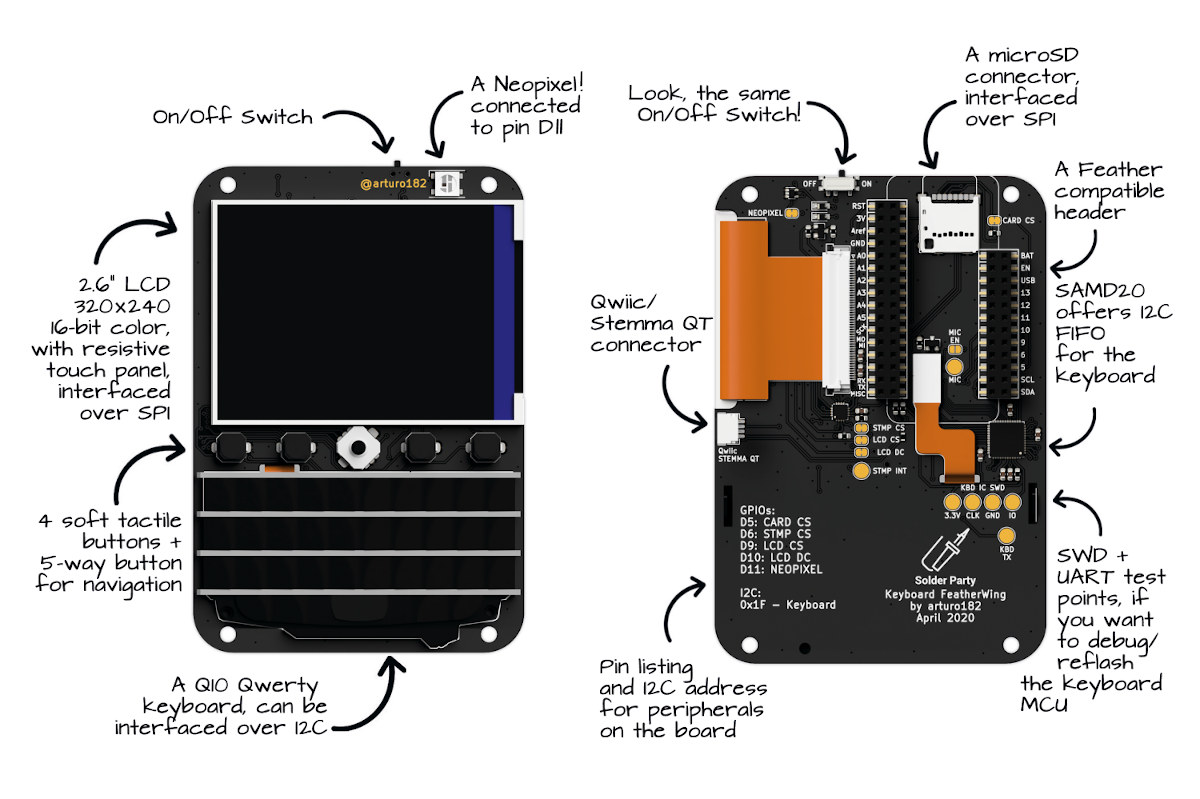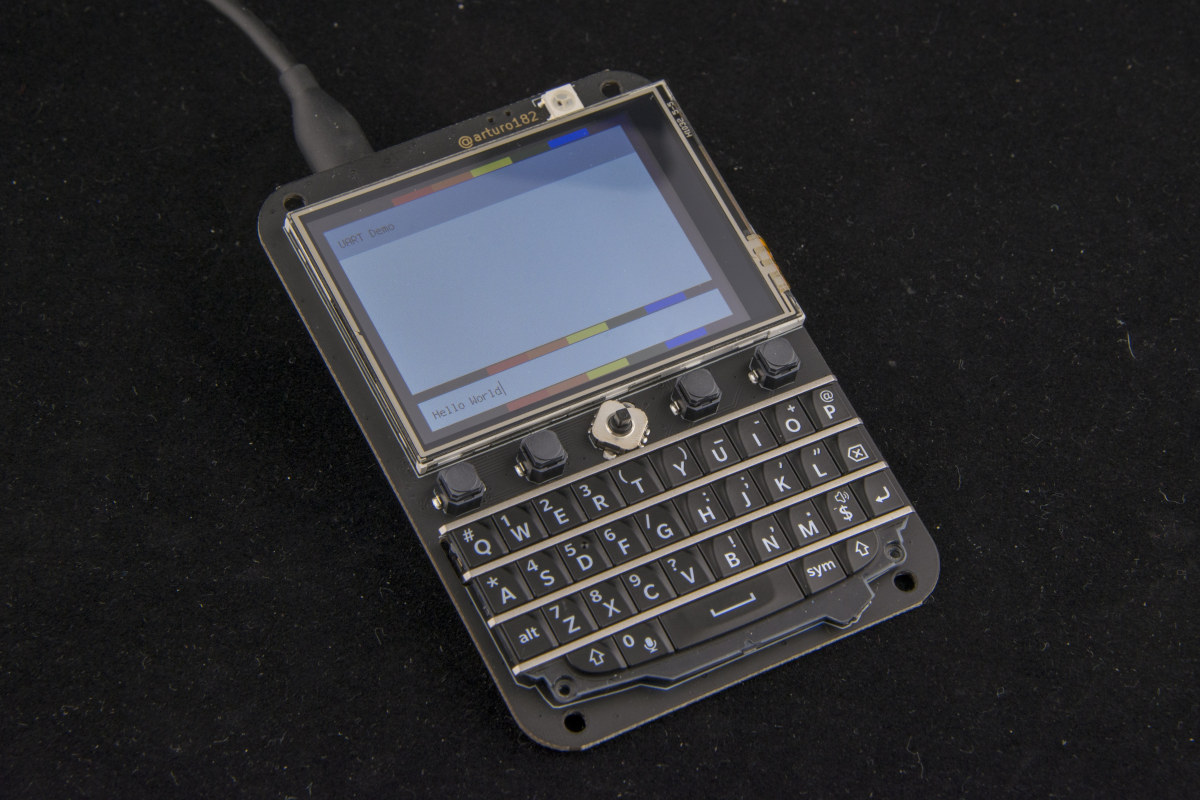Solder Party is a brand new Swedish startup founded by Arturo182 who previously designed several maker boards including the tiny Serpente R2 CircuitPython prototyping board, and its first product, named Keyboard FeatherWing, brings a QWERTY keyboard and 2.6” color LCD with resistive touch screen to any boards compatible with Adafruit Feather for factor.
That means you can build a portable device that runs Linux via the Giant Board, features an FPGA (Orange Crab), or a wide range of connectivity options including WiFi, Bluetooth LE, LoRa, etc… depending on your chosen board.
The solution actually brings a bit more than just a keyboard and color, as shown by the list of Keyboard FeatherWing key features:
- Display – 2.6” 320×240 16-bit color LCD with resistive touch screen (SPI)
- Storage – MicroSD card slot (SPI)
- User Inputs controlled by a Microchip SAMD20 MCU
- QWERTY keyboard (I2C)
- 5-way button
- 4 soft tactile buttons
- Expansion
- Stemma QT/Qwiic I2C connector
- Dual-row Adafruit Feather compatible female headers to have access to I/Os even when the Feather board is connected.
- GPIO solder jumpers to disconnect select pins from the FeatherWing as needed
- Misc – Neopixel RGB LED, On/Off switch, SWD/UART test points, 4x mounting holes

The board is open-source hardware, and the company provides KiCad hardware design files, SAMD20 firmware source code, as well as sample code for CircuitPython and Arduino all under a CERN open hardware license. You’ll find those and documentations on the Solder Party website.
Solder Party does not sell directly on its website just yet, and instead, you could purchase Keyboard FeatherWing on Tindie for $55 plus shipping.

Jean-Luc started CNX Software in 2010 as a part-time endeavor, before quitting his job as a software engineering manager, and starting to write daily news, and reviews full time later in 2011.
Support CNX Software! Donate via cryptocurrencies, become a Patron on Patreon, or purchase goods on Amazon or Aliexpress





